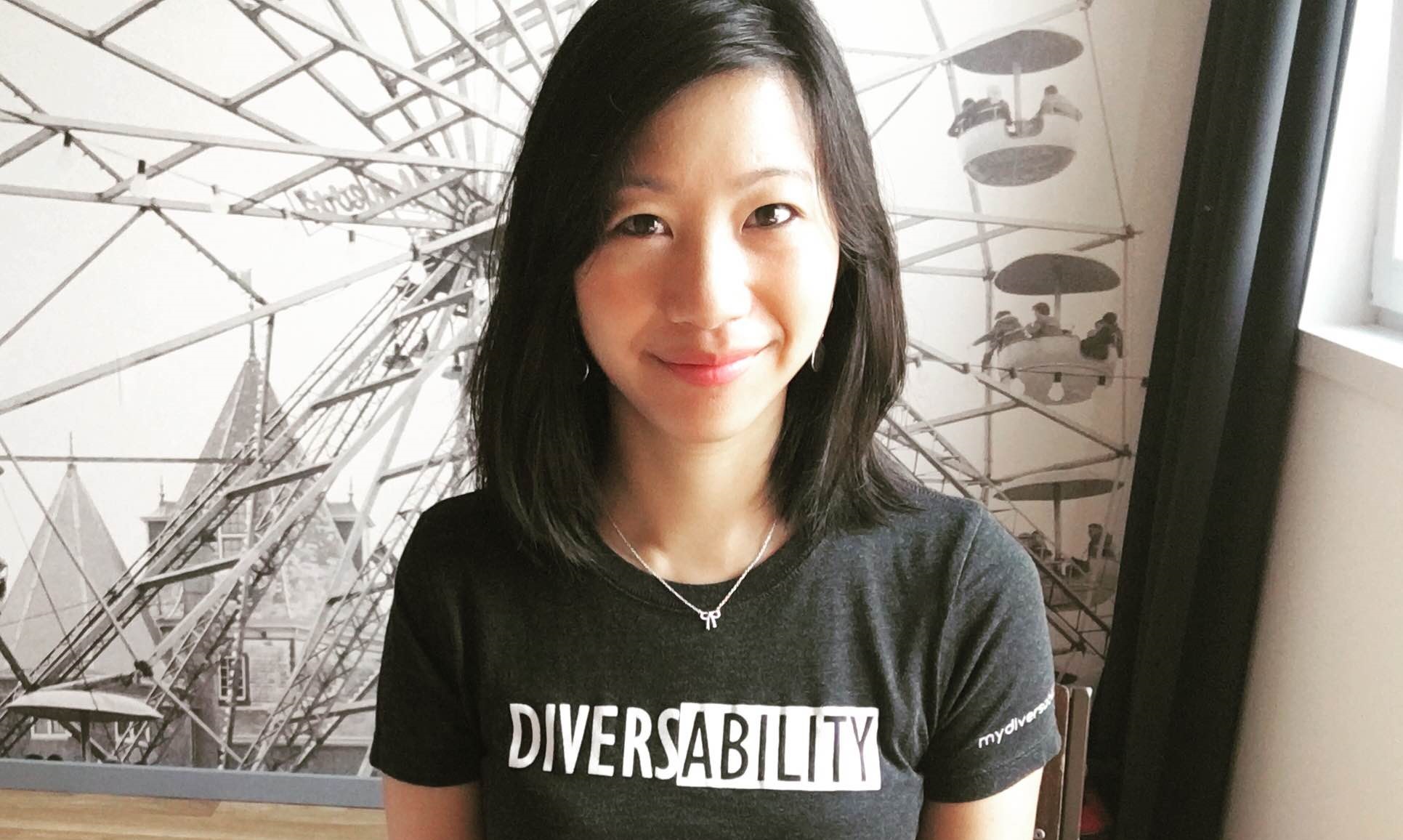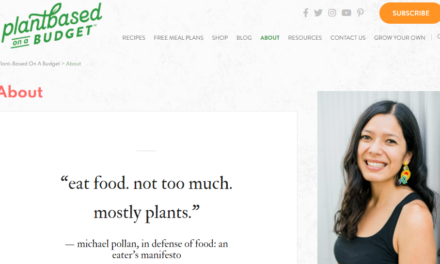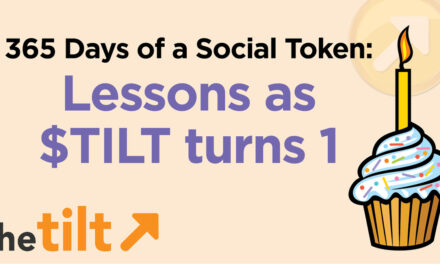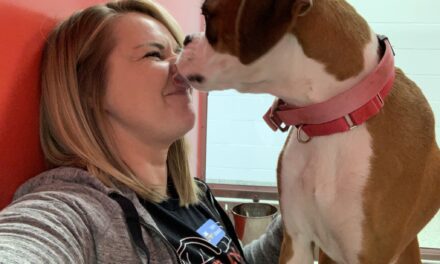Entrepreneur: Tiffany Yu
Biz: Diversability
Tilt: Disability representation
Primary Channels: TikTok (126.1K), personal website, Diversability website, Diversability’s social media
Other Channels: Instagram (31.5K), LinkedIn (20.2K), Facebook (11K), Twitter (8K), YouTube (560)
Time to First Dollar: Tiffany posted on Instagram and Twitter for several years before joining an influencer marketing program that netted her $20. Her first big deal came later that year when a brand paid $5K for a sponsorship package that included about six posts on Twitter and Instagram. She had about 10K total followers.
Rev Streams: Speaking engagements, brand partnerships, platform-specific creator programs, licensing, membership community, consulting
Our Favorite Actionable Advice:
- Consider no-money gigs: Early in her business, Tiffany accepted speaking engagements where the host paid only for travel. But that work allowed her to grow her audience and spread her message.
- Make it easy to contact you: Put your contact information in your profiles and pages to make it easy for potential sponsors to find out how to reach you.
- Show potential sponsors what you can do: Tiffany has created posts that show her using a product even though the brand didn’t pay her. She can share those with brands interested in what sponsoring her content would look like.
The Story of Tiffany Yu
Tiffany Yu’s career has taken her to extremes. The one-time investment banker has worked in board meetings with artist and entrepreneur P. Diddy and traveled to Davos, Switzerland, where she spoke at the 2018 World Economic Forum annual meeting. But she’s also cobbled a living by renting space in her apartment on Airbnb and selling furniture on Craigslist.
All those experiences prepared her for what she’s doing now. Tiffany leads Diversability, a community with a mission to elevate understanding and pride for people with disabilities like her. And she’s building a growing content career that helps to fund her passion for advancing disability representation. In 2022, she earned $105K as a content creator, up from $55K the previous year.
Entrepreneur @IMTffanyYu turned diversity representation into a highly profitable #ContentBusiness. #CreatorEconomy Share on XOn TikTok and elsewhere, she creates popular content that demonstrates how she, who has a paralyzed arm, navigates life, how her followers can support those with disabilities, and how she builds her content business.
Through a seed gift and crowdfunding from her community, Tiffany’s success has even allowed her to establish a Disability Empowerment Endowment Fund at her alma mater, Georgetown University.
“It’s changed my life,” Tiffany says of content creation.
Life experiences
Tiffany’s desire to boost the representation of people with disabilities stems from life experience. At age 9, she survived a car accident that left her father dead and one of her arms paralyzed. Growing up, she didn’t speak much of the experience and often tried to hide her arm.
Even when she launched a club that was the original incarnation of Diversability as a senior at Georgetown, she was still uncomfortable talking about her disability. “I didn’t open up an invitation for other people to get to know this pretty significant part of how I moved about the world,” she says.
However, her comfort in talking about her lived experience grew over time. In 2015, about five years after graduating, she relaunched Diversability to meet up with others first in New York City and a year later in San Francisco, where she moved for a job.
It was her side hustle until she was fired from her day job in 2017. She looked for ways to turn Diversability into her career. She paid the bills through Airbnb and Craigslist earnings as she accepted invitations to speak at conferences, which only covered her travel.
@IMTffanyYu paid her bills through selling on @Airbnb and @Craiglist while she took unpaid speaking gigs and grew her business. Share on XNiche lessons
Tiffany posted actively on some social media platforms, but her content career began in earnest in 2020 when the pandemic dried up her Airbnb rentals, Craigslist sales, and conference invitations. She hustled to take advantage of any option. She received pandemic-related unemployment assistance, launched a podcast, and built her social platforms.
While Instagram was her biggest platform, she joined a new TikTok creator program in July 2020. It paid educational creators for informative content, giving Tiffany an early lesson on the importance of niches.
Despite her work in the disability space, she focused her content on entrepreneurship more generally. She didn’t think talking about her disability would draw many people to her page. But, on the recommendation of a talent management director, she began sharing about her life.
@IMTffanyYu didn't think talking about her disability would interest people on her #TikTok where she talked about entrepreneurship. She was wrong. #CreatorEconomy Share on XHer first viral video came quickly. She demonstrated how she put on a face mask with one mobile hand. The video racked up more than 1M views, and the content surrounding it went viral, too, she says. “What I’m learning throughout the whole trajectory of my time on TikTok is that I had to start out very niche to bring in the audience,” she says.
Benefits of content creation
Her other platforms, especially Instagram, grew as her TikTok page gained followers. Tiffany now earns revenue from a mix of streams. Most of her income comes from speaking fees. Her content-related revenue ranks second and comes from brand partnerships, social platform creator programs, and licensing of her image on other sites. She also runs a membership community through Diversability and does some consulting.
Her social channels offer her big benefits. They provide a way to monetize her work as a disability advocate. She loves learning, and content creation has allowed her to learn new skills and explore her creativity. They allow her to spread her message beyond her in-person engagements.
Her content also provides a way to connect with and build a community for people with injuries like hers. “Some of the questions (that she answers on social) like, ‘How do you shave your armpits?’ or ‘How do you get dressed?’ actually came from them,” she says. “They genuinely want to know.”
Advice for content entrepreneurs
For newbie creators eager to monetize, Tiffany offers these tips:
Make yourself findable
Tiffany’s friend is a content creator with over a million followers on TikTok, yet they’ve never done a brand deal. Tiffany noticed one reason when she visited their page: Their email isn’t easy for brands to find. So put your contact information on your page.
Make ad lookalikes
Tiffany sometimes creates content that looks sponsored. In her series on how she navigates life with a paralyzed arm, for example, she uncapped a lip balm made by a company that wasn’t a sponsor. Publishing posts like that helps brands see what a sponsored post might look like.
“If either I’m pitching or they reach out, one of the things [brands] ask is, ‘Have you created any other content that might look like this?”
Join an influencer platform
Tiffany has found success using influencer marketing platforms such as Mavrck and Aspire, which connect brands and influencers. The rates are usually lower than if you sold the sponsorships directly. Still, they provide an opportunity to get discovered by new brands and fill in the gaps during slower revenue periods. For newbies, she says, “It’s a little bit easier of a way to get used to pitching and seeing what brands are available.”
About the author
Sarah Lindenfeld Hall is a longtime journalist, freelance writer, and founding editor of two popular parenting websites in North Carolina. She frequently writes about parenting, aging, education, business management, and interesting people doing remarkable things.











